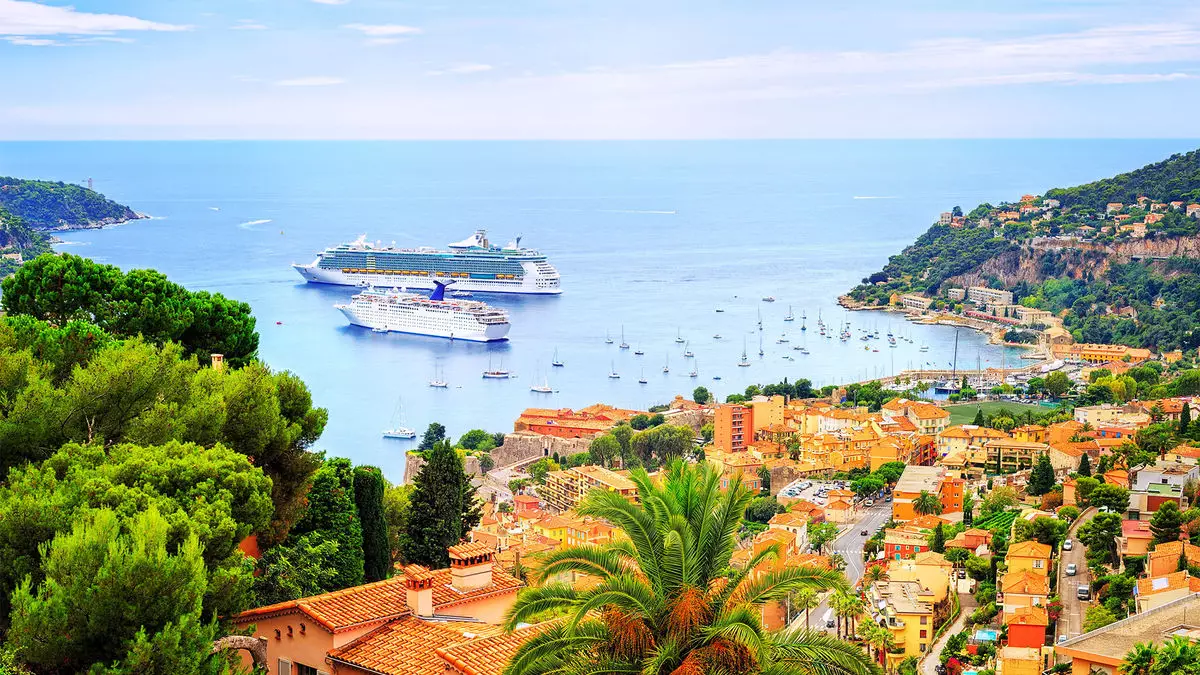The cruise industry, once synonymous with luxury, exploration, and economic growth, now faces an existential challenge in some of the world’s most picturesque locales. One such battleground is the iconic Nice-Côte d’Azur, where government officials are contemplating stringent restrictions on cruise ships. The recent decree signed by Nice Mayor Christian Estrosi poses an outright ban on vessels carrying over 900 passengers, citing concerns over overtourism and pollution. While the Cruise Line International Association (CLIA) vigorously opposes this initiative, advocating for a more balanced approach to tourism management, the debate raises essential questions about the future of cruise tourism in this revered French Riviera region.
At the crux of this evolving situation are various stakeholders, from local government officials to cruise line executives and the community at large. Mayor Estrosi has expressed unequivocal disdain for large cruise ships, asserting that they contribute to environmental degradation and hinder local experiences. His approach reflects a broader trend across Europe, where many regions are grappling with the dual challenges of excessive tourism and ecological sustainability. The mayor’s statement that cruises “that pollute and dump their low-cost clientele” have “no place with us” starkly underscores the growing public sentiment against unregulated tourism. On the flip side, CLIA and allied maritime organizations are warning against the economic repercussions of such a ban, estimating potential losses exceeding $600 million regionally and more than $10 million for local businesses.
The Broader Context: Overtourism in Europe
The Nice-Côte d’Azur situation is emblematic of a broader movement seen in cities like Venice and Barcelona, where residents and policymakers are equally alarmed by the seemingly incessant flow of cruise passengers that can overwhelm local infrastructure. Overtourism can disrupt local life and contribute to the degradation of cultural treasures. However, municipalities are tasked with striking a delicate balance between protecting their communities and preserving the economic benefits derived from tourism. As cruise lines and their patrons flock to picturesque destinations, city leaders are increasingly compelled to tighten regulations, which could fundamentally alter the dynamics of the tourism landscape.
The ramifications of the cruise ship ban extend beyond immediate monetary losses. The local economic ecosystem in Nice, heavily reliant on vibrant tourism, risks experiencing significant disruptions. The forthcoming restriction will primarily affect popular lines like Norwegian Cruise Line and Royal Caribbean, whose vessels frequently exceed the set passenger limit. For smaller ships, however, opportunities may arise; cruise lines like Ponant have already begun designing new itineraries that emphasize their ability to access ports where larger vessels cannot. The shift may not only affect large cruise lines but could also foster a burgeoning market for small-ship cruising, which could prove more sustainable in the long run.
While industry leaders like Frank A. Del Rio of Oceania Cruises have acknowledged the diverse options available in the Mediterranean, they still express concerns that such a significant ban could lead to unpredictable shifts in cruise patterns. Moreover, travel advisors who specialize in cruise bookings may find themselves navigating uncertainty as clients‘ itineraries could be altered at a moment’s notice. Adapting to evolving regulations will demand agility from both cruise operators and travel planners as they seek to optimize the new landscape of cruising.
Interestingly, this decree could catalyze an evolution in traveler preferences. As Jackie Friedman pointed out, a pivot towards intimate small-ship experiences is not only possible but could soon become the new normal. This potential paradigm shift signals a broader trend where travelers may increasingly prioritize not just the destination but the manner in which they travel. A tourist’s desire for meaningful experiences, coupled with a growing awareness of sustainability, might render smaller, eco-friendly cruises more appealing.
As the repercussions of the cruise ship ban in Nice-Côte d’Azur continue to unfold, the industry finds itself at a critical juncture. Striking a balance between preserving local communities and catering to the economic imperatives of tourism will require innovative solutions and flexible strategies. Ultimately, the decision facing Nice reflects a larger cultural reckoning as communities worldwide re-examine what it means to welcome tourists in the modern age: a balancing act between profit and preservation. The road ahead may be fraught with challenges, but it could also pave the way for a more sustainable approach to tourism — one that allows regions like French Riviera to thrive while safeguarding their cherished local environments.


Napsat komentář